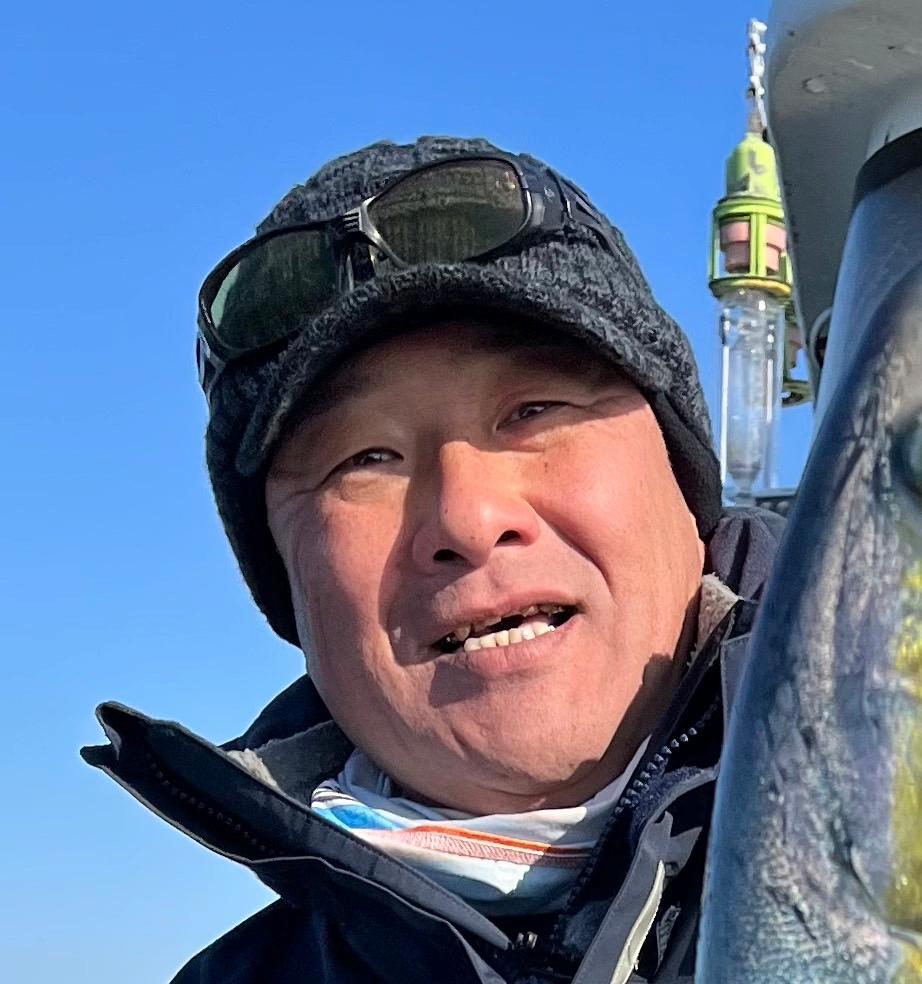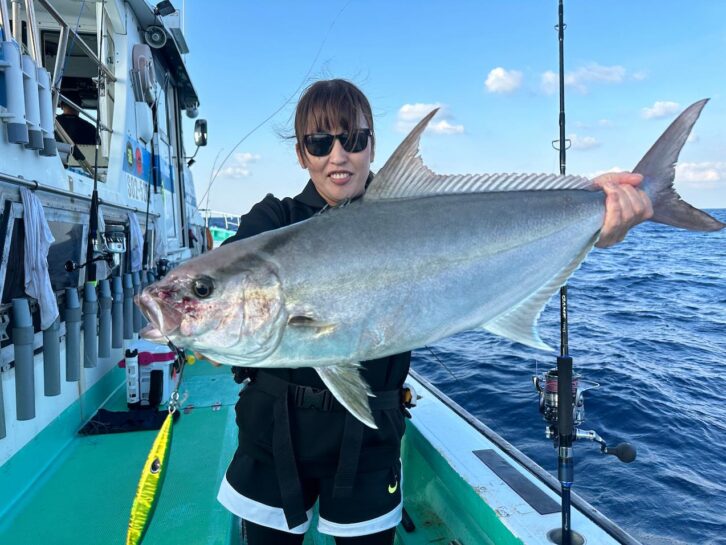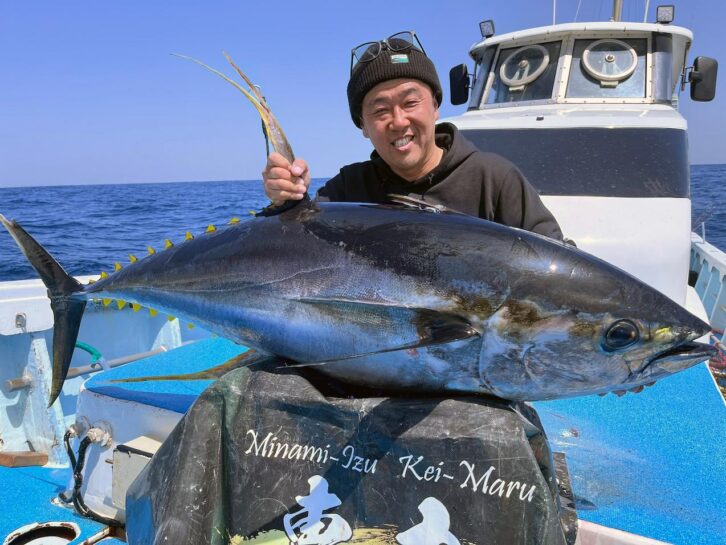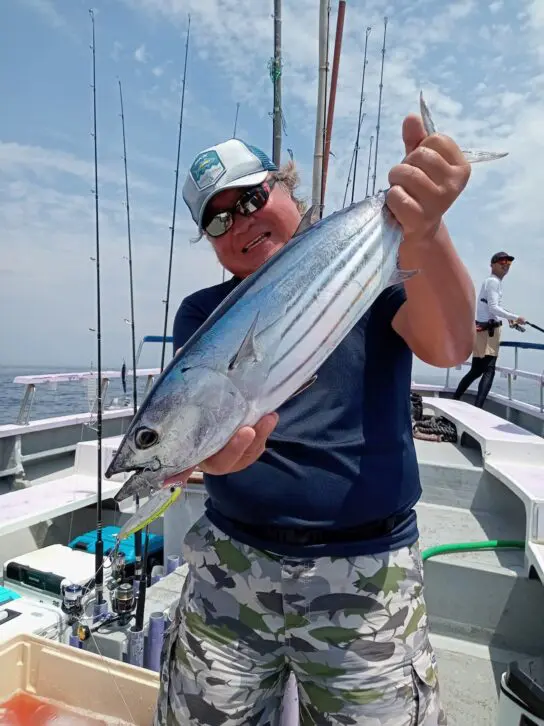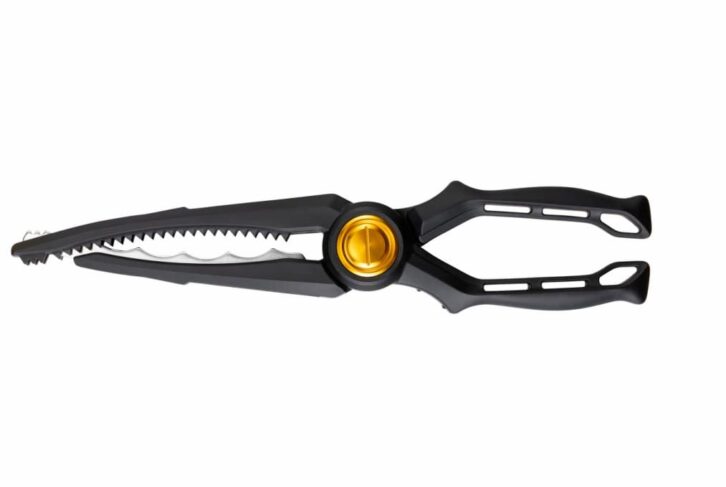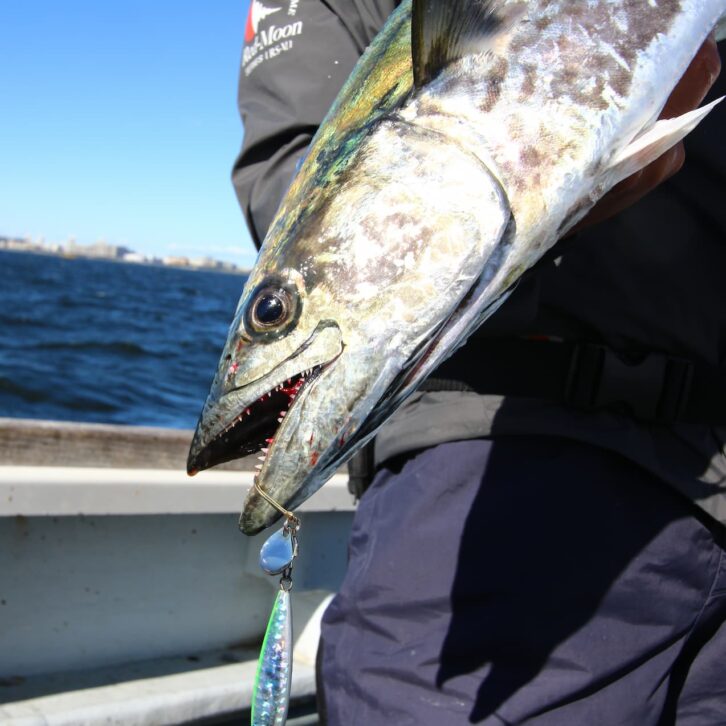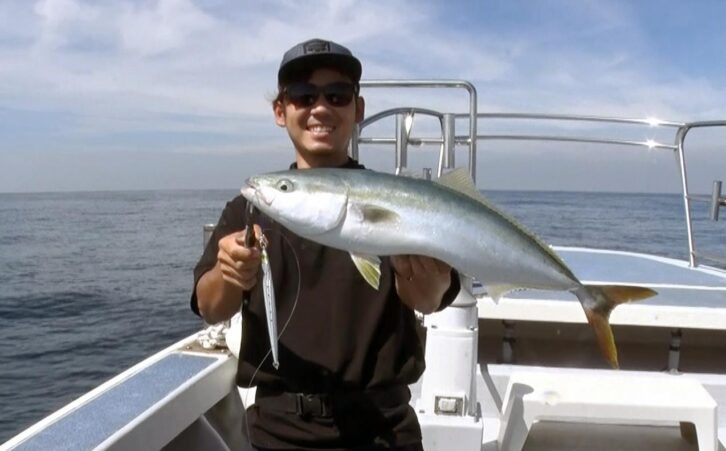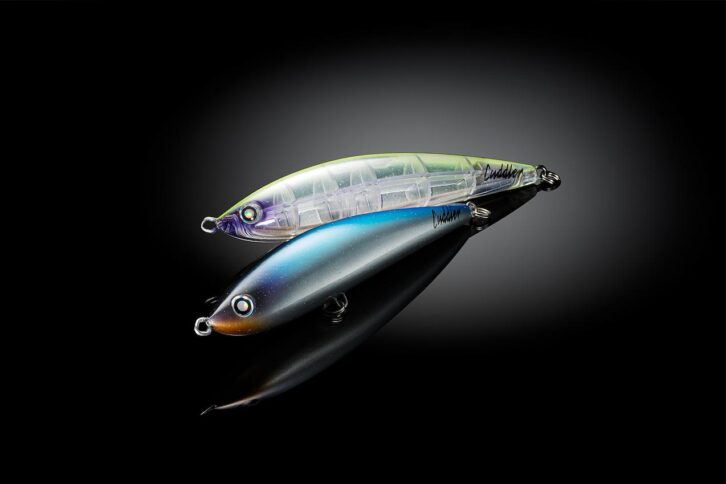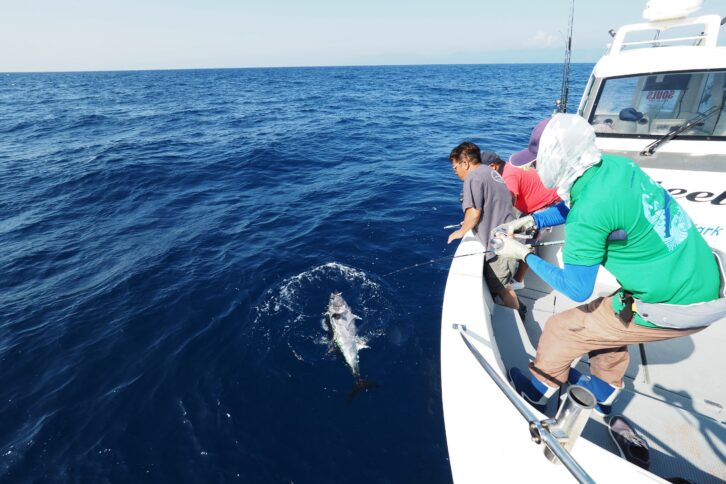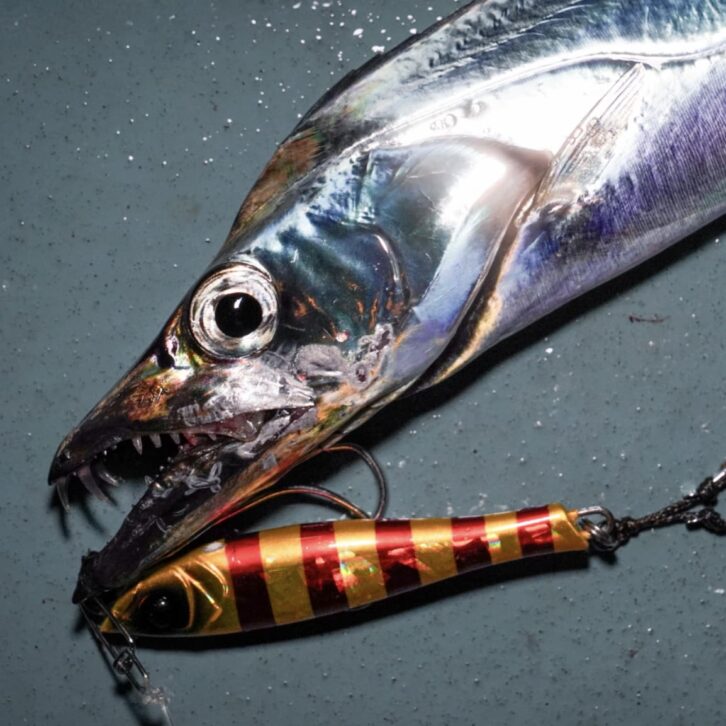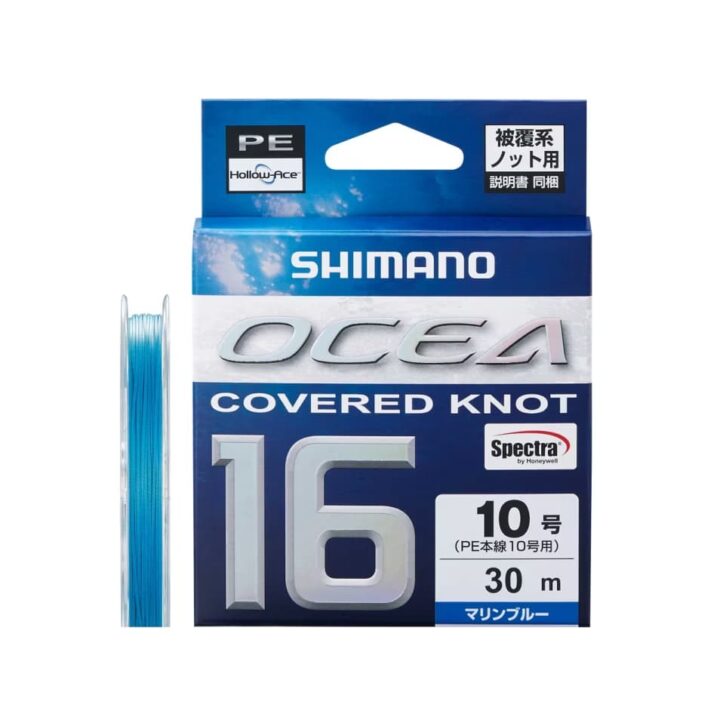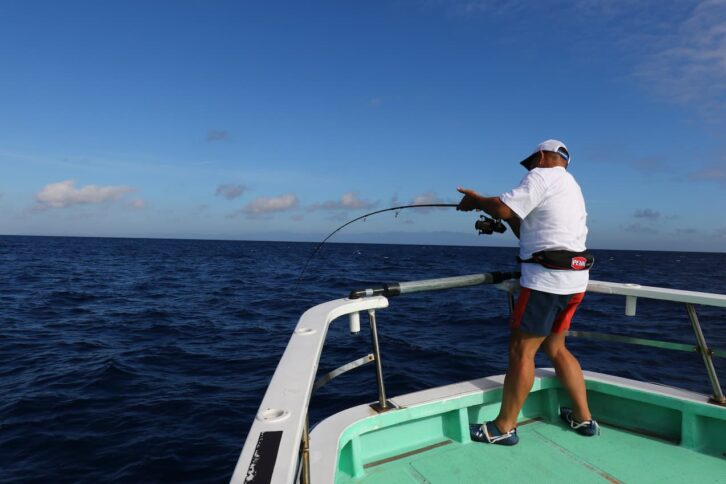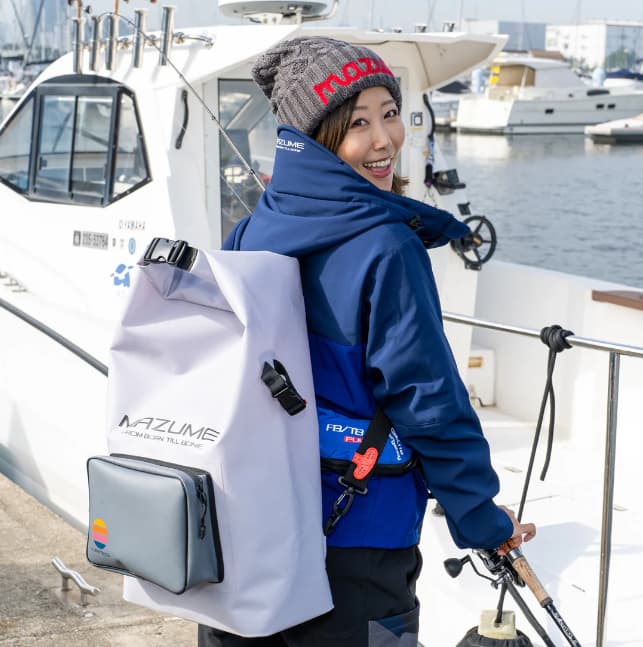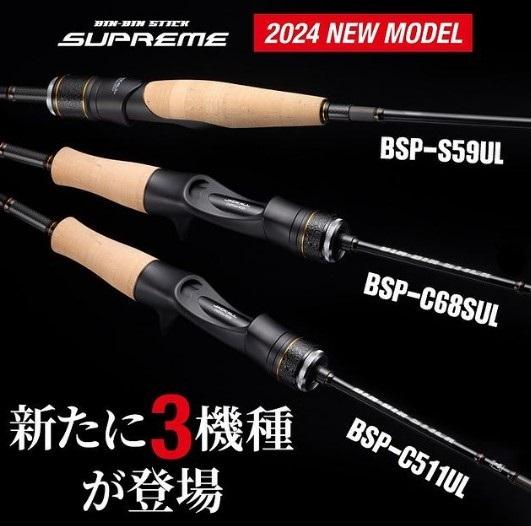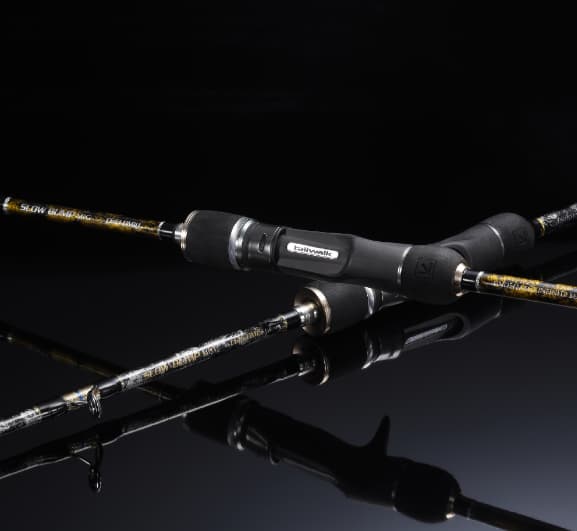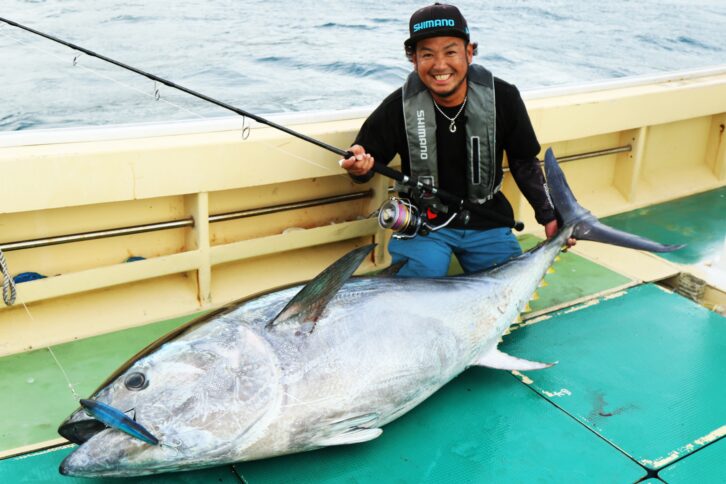Serialization: Kei Hiramatsu's Offshore World vol.15
Offshore Real Fishing. Revenge fishing off the south coast of Izu Peninsula, Shizuoka Prefecture. Aiming for amberjack, kingfish, and Yellowfin
This summer, the weather has been a real bummer. It was a summer when I could not go fishing. I made plans to fish off the southern coast of Izu once every two weeks in July and August, but was plagued not only by typhoons, but also by monsoons. I have long had a fascination and desire for Izu, and since it is within easy commuting distance from my home, it is a field I cannot miss. I had practiced targeting sunfish in Tsushima, Kyushu, and was betting on the chance of an "Izu masa" to come someday. This time, I would like to report on my Izu trip, which I was finally able to visit in September.
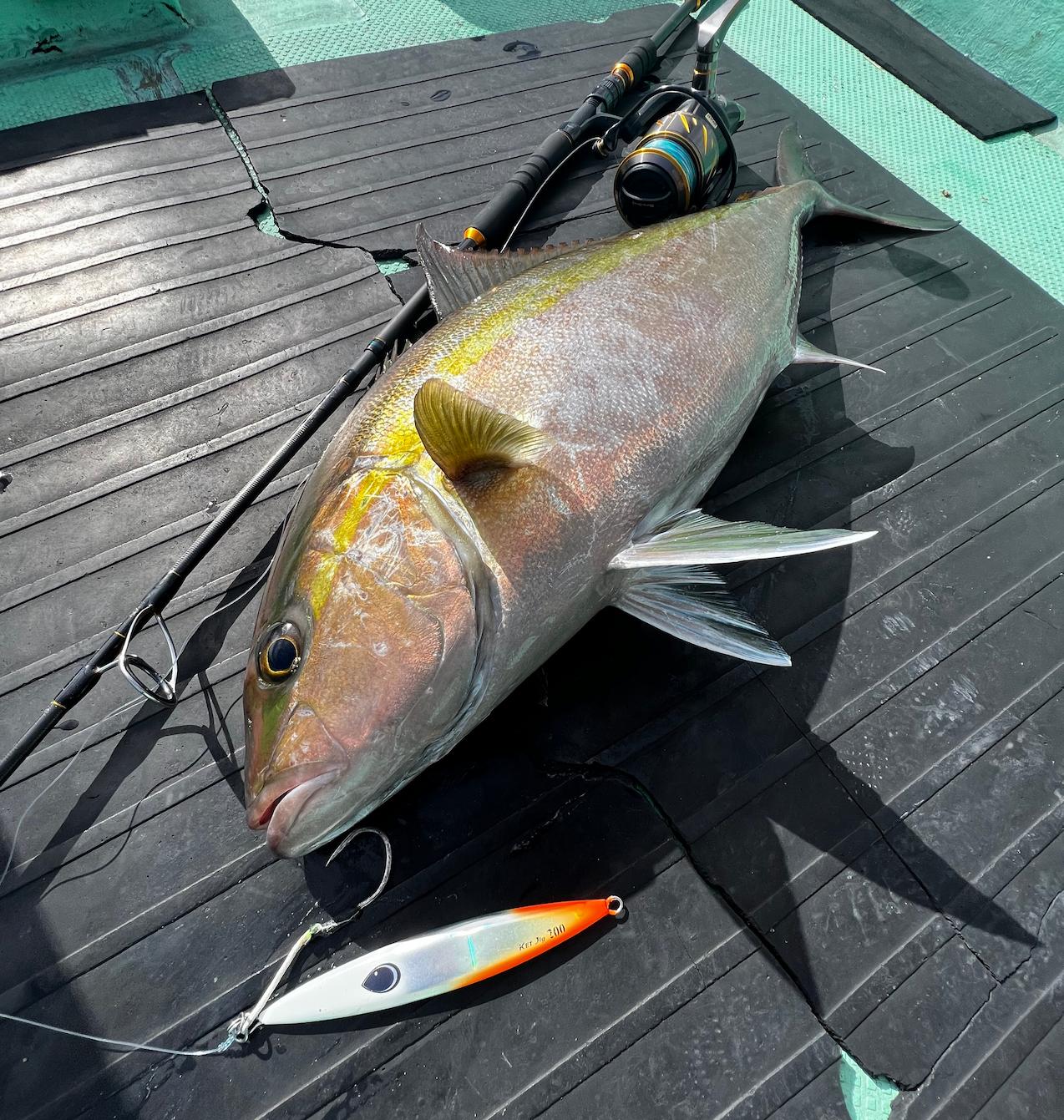
INDEX
Set sail for Izu-Minami Offshore.
This time, we were going offshore with swimmers. The meeting time was 2:00 pm at Ajiro Port in order to catch mackerel for bait fish before entering the main point. For lure anglers only, the meeting time was 3:00. First, we checked our fishing position, paid the boarding fee, and headed for the waters off Hatsushima Island. There, we secured mackerel for bait, and arrived at the point off the south coast at 6:00 pm. The fishing begins here.
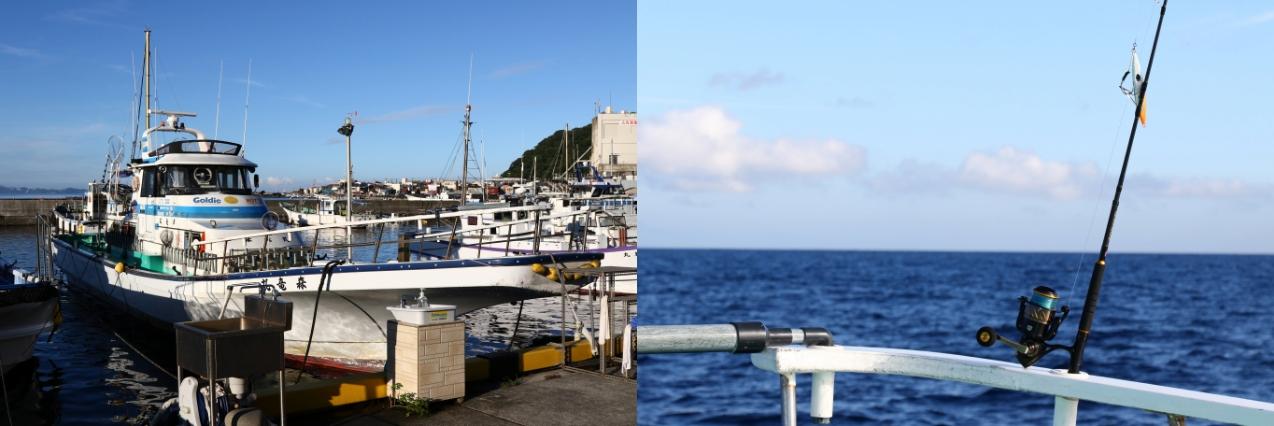
The Moriryu Maru sails from Ajiro on the Izu Peninsula, where Hiramatsu has been going. They sail from the coastal waters to the southern offshore of Izu, Mikura Island, and other locations in search of sunfish, amberjack, and yellowfin tuna. In addition to the usual spinning-reel style jigging tackle, we brought bait jigging tackle and casting tackle.
This time,” said Captain Takio Morino, who was at the helm of the Moriryu Maru, “we will be fishing off the southern coast of Izu Minami, near the Niijima Island area. There are a number of points off the southern coast of Izu, and the captain makes his choices based on the density of fish and the tidal conditions. This time, we were on the same boat with the anglers who were fishing for swimming, so we were the lure fishermen on the “myoshi” side of the boat, while the bait fishermen were fishing from between the trunks to the top of the boat. We arrived at the point. The wind was blowing at a comfortable speed for casting plugs, and the sea condition was almost calm. The tide is running at 2 knots. It was the easiest condition to fish, and we dropped jigs while concentrating. Off the south coast, yellowfin tuna were entering before typhoon No. 12, and it seemed that they were not easy to hit, but boils could be seen in some places. We could feel the fishiness of the fish, and our motivation was high. The birds were not as easy to see as on Mikura Island, and although they were turning, they did not seem to be concentrated in one place first thing in the morning. Anglers who were swimming slowly drifted mackerel.
I heard the announcement of 105m depth and started with a 250g Gummy jig. 2 knots of current was running, but at first I felt that the bottom tide was not moving much and the upper tide was pushing strongly. If we could take measures against the double tide, we could make the jig dance on the bottom. I dropped the jig while exploring the angle of insertion of the jig in accordance with the boat’s current. On the surface of the water, the yellowfin tuna were boiling restlessly at a little distance from us, just as they had been first thing in the morning. This situation makes us wonder, do we continue to attack with a jig? Do we explore yellowfin tuna by casting? I was torn between the two. I went ahead to aim with a metal jig. The tide had started to move in sync with the bottom and the surface layer of the water from first thing in the morning, so I thought a jig would be the best choice at this time of the day. I switched to a KEI-JIG 200g with a smaller silhouette to reduce resistance from the upper tide, rather than a 250g or 220g Gummy jig with a larger surface area. I decided to target the bottom thoroughly. On this day, 10:30 was the end of the tide at Shikinejima Island. He was aiming for the best time around 8:00 a.m. when the tide was at its lowest. We continued jigging. The jigging had some strikes, but there were a lot of sweet bites and hook-outs from Spanish mackerel.

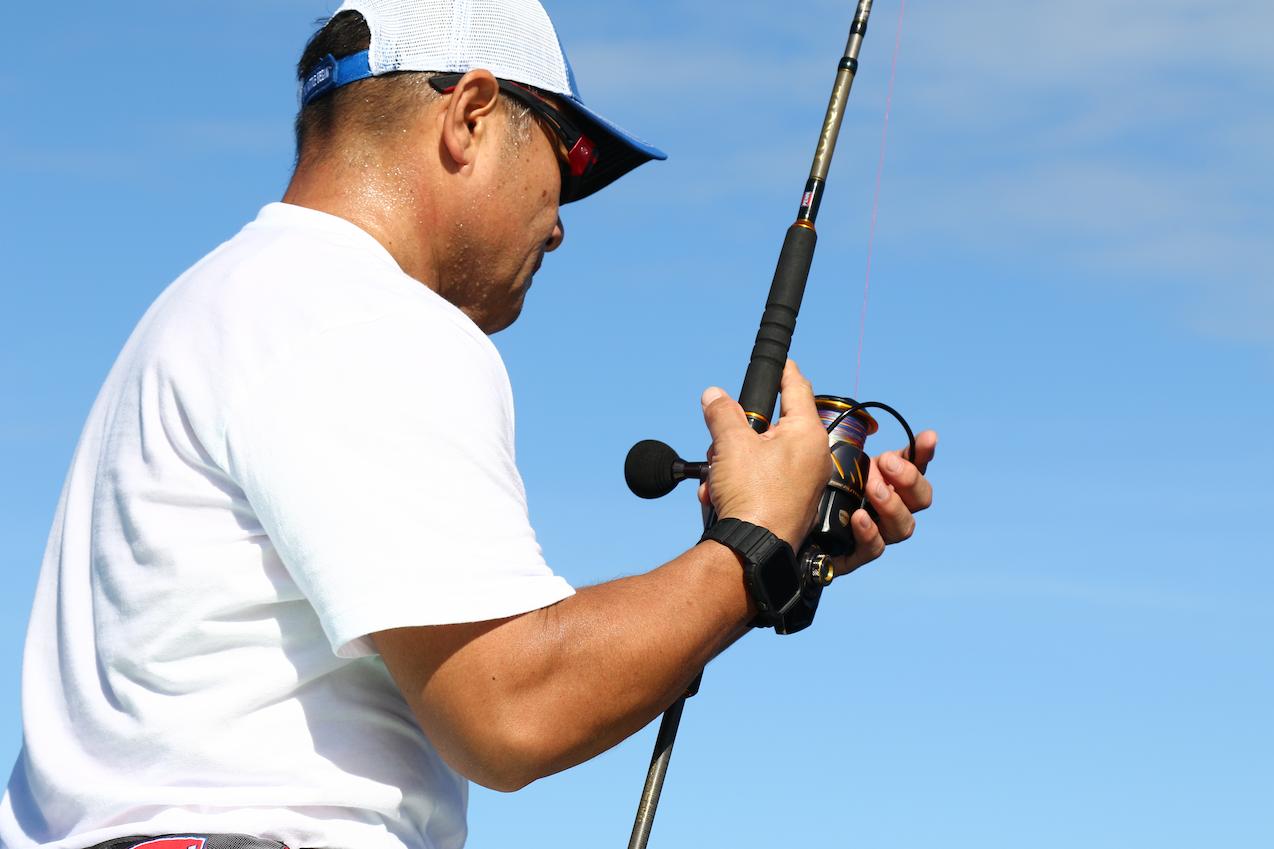
I always drop a Gummy jig first as a pilot jig, but on this day, I judged that it was a double tide by looking at the tide, so I switched from a Gummy jig with a large surface area to a KEI-JIG 200g with a small silhouette. To prevent two tides, I dropped the jig while properly summing it to avoid making dandruff. The reel was a Penn Authority 6500HS. The line is PE No. 4.
How to target mainly bluefish by jigging.
The sea conditions were such that birds were flying around and tidal waves were beginning to rise toward the undulating rapids. Captain Morino announced the bottom condition as it changed, and we started jigging at 105m, then 97m, 90m, 80m, and so on. The top of the rapids was at 68 meters, where the water started to get deeper again. The anglers are allowed to target the bluefish that are attached to the edge of the rapids. The detailed and easy-to-understand announcements give anglers a hint for searching in the water. How is the tide hitting the rapids moving in the water at the point you are targeting? How are the baits around the rapids positioned? It is important to find out through the metal jig. The first contact is when the current is running up against the rapids. A short bite while we were running through the rising terrain. I couldn’t help but laugh. Was the bite shallow, or was it just playing with the jig? Although we could not hook the bite, we were convinced that bluefish were migrating to the rapids. I concentrated on jig manipulation thoroughly.
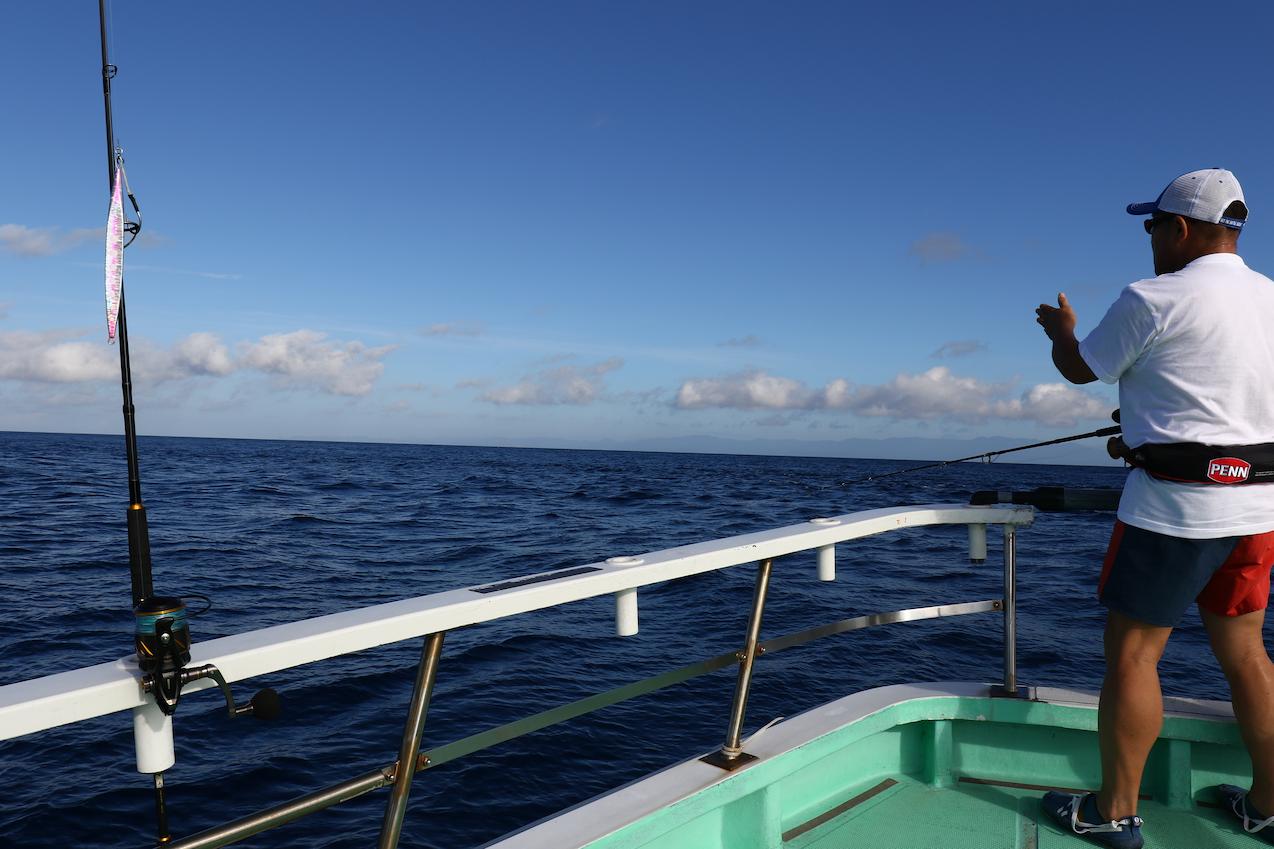
Hiramatsu often does this action at the beginning of fishing or after moving to a new point. He checks the direction of the tide and decides where to cast the jig. He considers how the boat will enter the point and where to cast the jig in order to get the jig in the right place to catch the fish. In order to make the target fish chase the jig, it is important to consider the position of the jig, not just dropping it directly down.
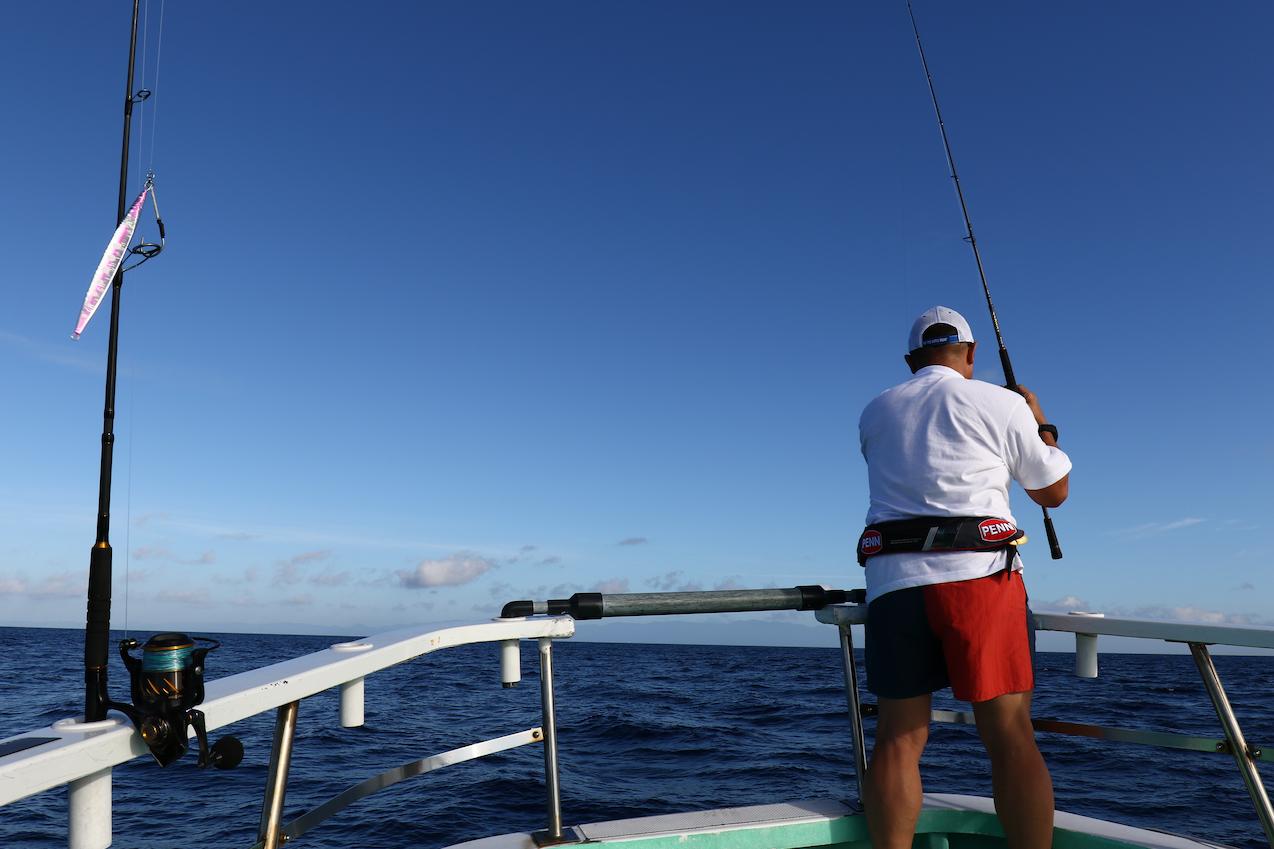
The angler manipulates the jig while keeping an eye on the current and condition of the water through the line. Therefore, always concentrate. He must be alert even during the fall of the jig.
When running down over the rapids, we search from the bottom to a little above the bottom. When the tide hits the rapids, we search for the tide to see if it is above or below the rapids. This means the bait reaction that often occurs at fish reefs, etc. In this case, I tried to imagine such a situation. I imagined that baits were accumulating in the lower part of the tide and bluefish were targeting them. I got a bite. I was able to find a good-sized amberjack in this area.
After that, we concentrated on fishing again. However, the tide slowed down around 10:30 because the tide was about to stop. I tried casting to find yellowfin and Spanish mackerel, but got no response. I kept on exploring so far, but took a short rest.
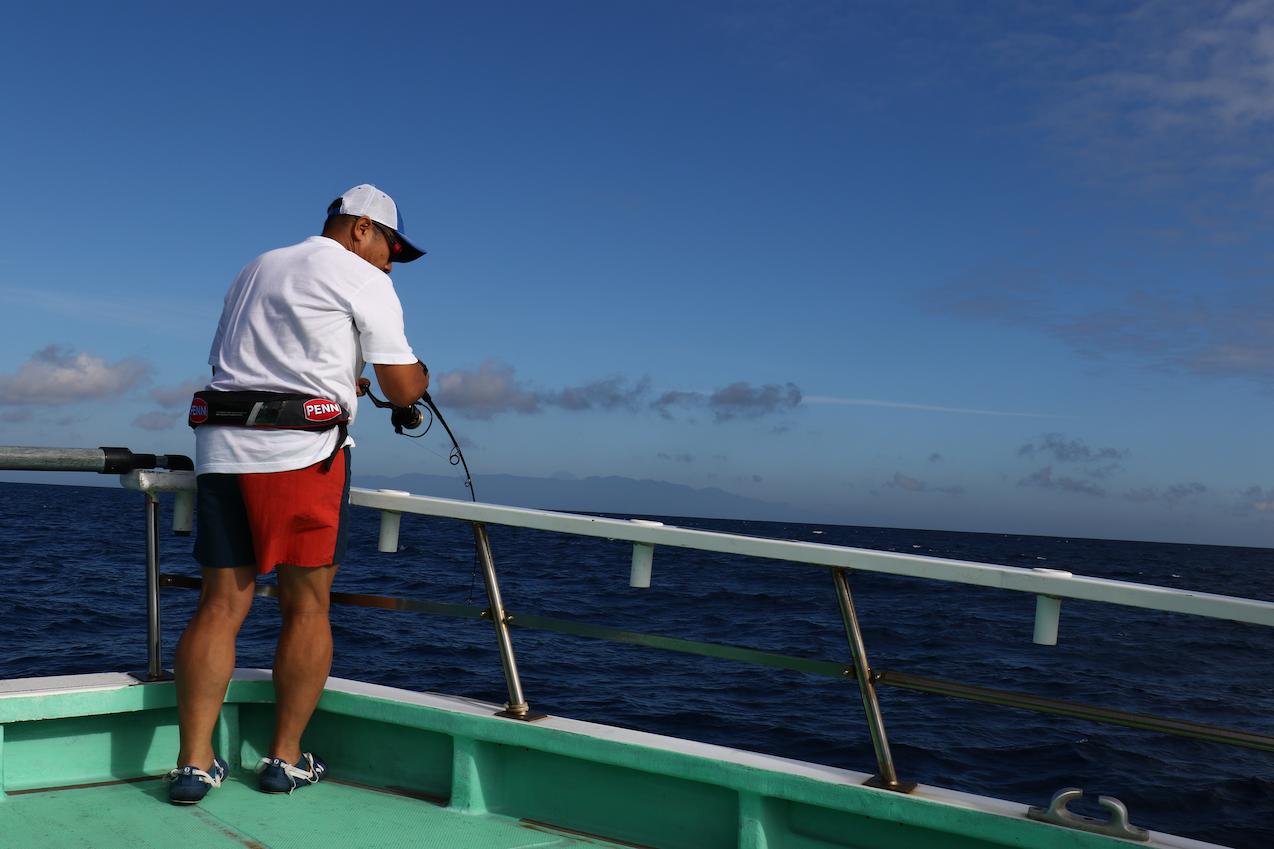
I imagined the underwater situation as “a bluefish targeting baits that had accumulated in the lower part of the tide,” and carefully passed a jig through the bait, and got a strong bite. If I tried to quickly and forcibly bring the fish in, it would be more violent. Instead of pulling in by force, I carefully closed the distance to the fish as it moved.
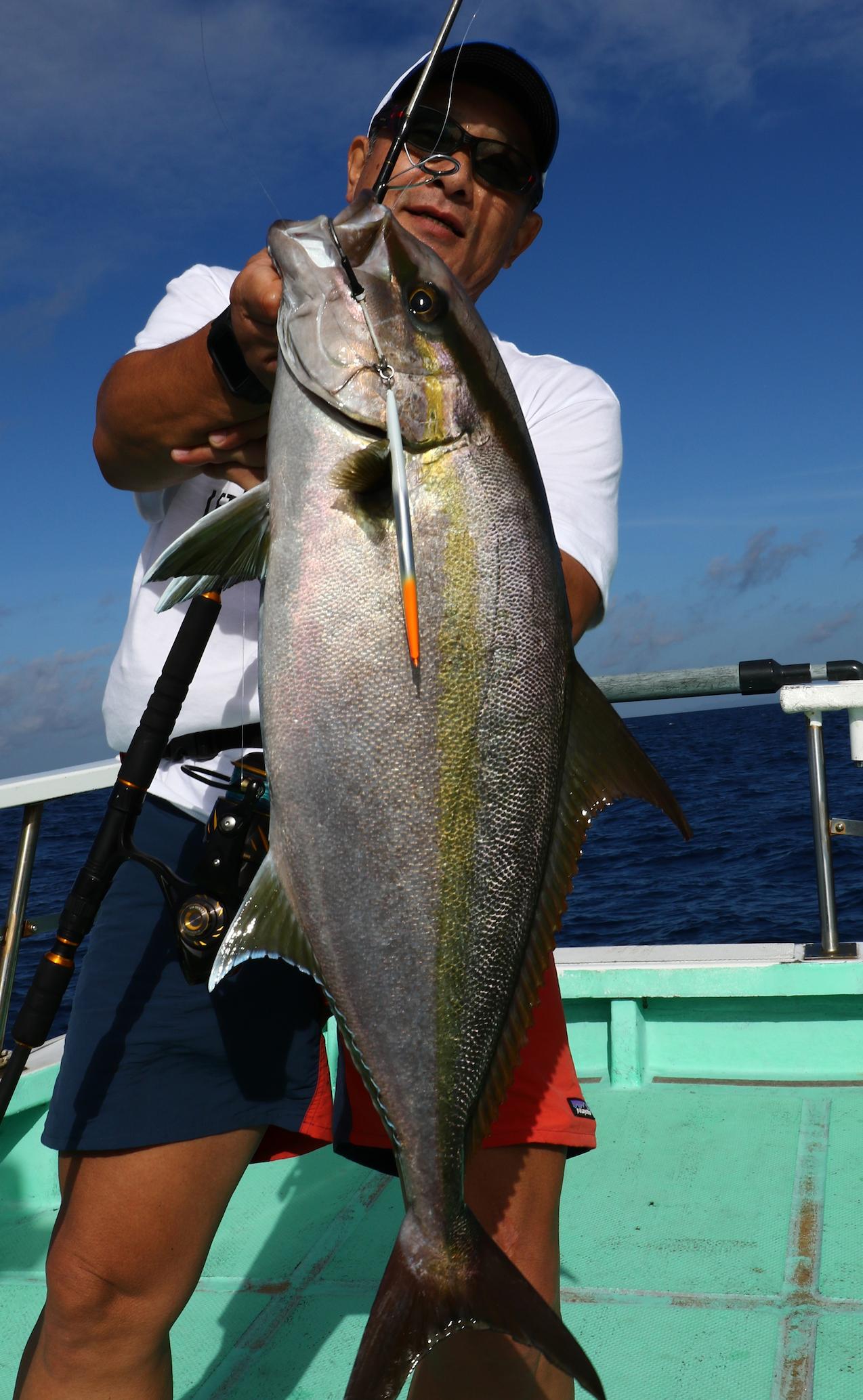
A nice one. It was not an oversized fish, but it was a good size for this area.
Hiramatsu-style must-have pattern
The tide this time was a double tide, and we had a hard time in the first half. The fish finder showed that the baits were firmly on the bottom. The key was how to target them. I thought that the style of using a heavy metal jig against the current was good for getting the jig to react to the current, but it did not lead to the conclusion that the jig could make the angler bite. I use PE No. 4 as my main line, but I use two different leader thicknesses. I put the jig on the tide and use the resistance of PE line. In addition, this time I used a jig shaped to have less resistance to the tide, and selected a jig that was slightly lighter than the required weight, to help it land on the bottom. The same phenomenon occurred with the Gummy 220g. I had to re-trigger the jig after it had been jerked twice, but I was able to get to the bottom and make the jig appealing to the angler. By focusing on these movements, I was able to make the amberjack bite. Although it was a slow and slow way to catch fish, we were able to catch them by taking into account the current, the time of day, and the depth of the water. If I had not been aware that the fish were there, or if I had been puzzled by the yellowfin tuna boiling in front of me, I do not think the amberjack would have hit this time.

The tide was two tides, and the jig was being carried by the tide. Even KEI-JIG 200g, which has little resistance in the water, was being swept away, but I concentrated on landing the jig on the bottom to lure the fish. It was a bad situation to lure them twice in one cast, but I was conscious of landing the jig firmly on the bottom and luring them with firm action on those two casts.

The fish finder was showing bait from the bottom to the middle of the water. We could expect to see amberjack and sunfish on the bottom and yellowfin tuna migrating in the middle layer.
This fishing trip was a promotional photo shoot for Pure Fishing Japan and PENN reels, as well as an interview with Angler’s Time, where PENN’s PR department asked for impressions of the new reel before its release. The fishing was for bluefish by jigging, and for yellowfin and Spanish mackerel by casting. However, it was difficult to target them conveniently in two different styles, and in the end, we couldn’t deny the feeling that we ended up halfway through both. Also, I honestly wanted to attack shallower waters as a possibility for jigging. There are some shallow areas off the southern coast of Izu where you can’t get in, and since we were on the same boat with the swimmers, we had to go with the offshore tide line. …… However, I was able to enjoy the transition from the summer sea to the autumn sea. Although I could not catch the sunfish I wanted to catch the most, I will continue to fish for more opportunities in the future. The editorial staff will be compiling a report on the Penn reel items we used this time, so please look forward to that later as well.

The Fathom II 2Speed FTHII30LD, a new PENN reel, was also used in this interview. We will report on its comfort and performance at a later date.
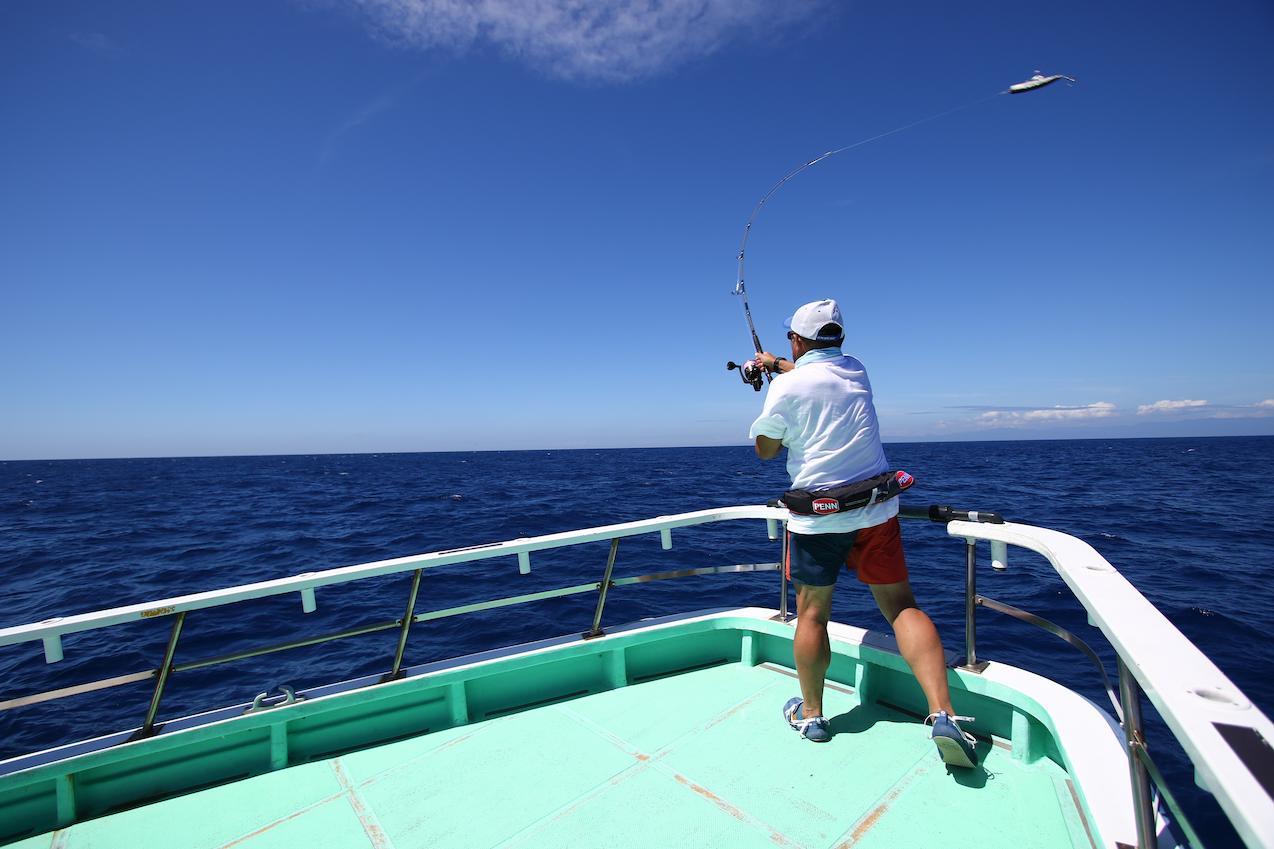
In the latter half of the day, as the birds were noisy, we also explored by casting. Casting rods and other equipment will be released by PENN later. We would like to explain this at another time.
Jigging Tackle
Rod: PENN TORQUE PHK-63ML
PENN TORQUE PHK-63M
Reel: PENN Authority 6500HS
Line & Leader: Sunline X8 Full Contact #4 & Tsunagito #14, #16
Lure: K-FLAT Gummy 200g, 220g, 250g Gummy-fat 180g, 200g
K-FLAT KEI Jig 200g KEI Jig Sharp 200g, 235g, 260g
Hooks & Parts: Owner Hyper Wire #7, Solid Ring 6.5mm
JS-39 Blue Chaser 11/0, 9/0
Tackle inquiry
Goldic TEL:046-252-6010 (closed on Tuesdays)
HP address https://www.goldic.net/
Kei Hiramatsu Official Blog [Ibusa Diary]
https://kei-hiramatsu.com/
Kei Hiramatsu facebook
https://www.facebook.com/hiramatsu.kei.1
Twitter account
@keitanhiramatsu
(Muttering)
YouTube Kei Hiramatsu Channel
Account:keisabani
(Please subscribe to the channel)


